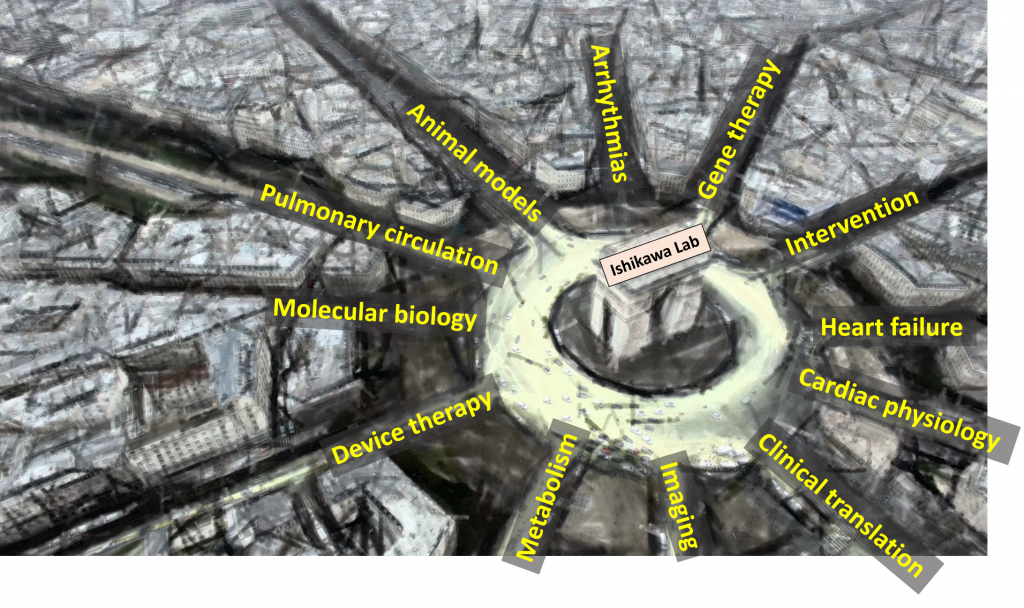The mission of Ishikawa laboratory is to “Identify, test and establish new therapeutic approach for the heart diseases”.
In the past >15 years, our laboratory has engaged in translational basic research focusing on heart failure.
Identify key pathology: Our We established several novel large animal models of acute and chronic heart failure that represent the clinical diseases. Some of these models are described in the “Animal models” page in our website. Since heart tissue is very difficult to obtain from patients, cardiac samples from large animal models are an extremely useful resource to evaluate the molecular alterations in a clinically relevant condition. Controlled model creation enables isolation of pathways that are truly involved in heart failure pathophysiology, in comparison to the variability of human tissue due to influences from other diseases including diabetes, renal dysfunction, etc. In the last few years, we have characterized physiological alterations in detail in our unique heart failure models, and further analyses in the molecular pathways will likely lead to novel findings in the coming years.
Test new therapies: These animal models are also useful for evaluating the therapeutic efficacy of novel approaches including gene, cell, and small molecule therapies. We have validated several novel gene therapy approaches in clinically relevant heart failure animal models and some of these positive results are and have been translated into clinical trials.
In addition, our lab uses the animal models to examine the impact of device-based therapies including left ventricular assist devices and temperature controlling devices. We have reported how percutaneous left ventricular assist devices alter coronary and left ventricular physiology in different disease settings. Further, we demonstrated that mechanical unloading not only provide beneficial effects on the left ventricle, but also on the left atrium. Multiple studies are underway in our lab to better characterize physiological effects of acute left ventricular unloading and to use it as a therapeutic approach.
Establish clinically applicable protocols: One of the challenges in translating basic research to clinical practice is the size difference and complex biology of humans compared to the rodent models usually used in the bench setting. To maximize the efficacy and minimize safety risks, it is essential to determine drug dose, delivery method, treatment time line and appropriate end point. Using clinically relevant models, our lab establishes these key factors that cannot be understood in small animals. For example, our prior gene therapy project has laid the foundation for past and ongoing clinical trials (CUPID trial, NAN-101 trial) and our physiology experiments provide useful information to maximize the efficacy and safety of device therapies.
 As shown above, we stand at the intersection of various topics associated with cardiovascular research with our main street as clinical translation of new therapeutic approaches.
As shown above, we stand at the intersection of various topics associated with cardiovascular research with our main street as clinical translation of new therapeutic approaches.
